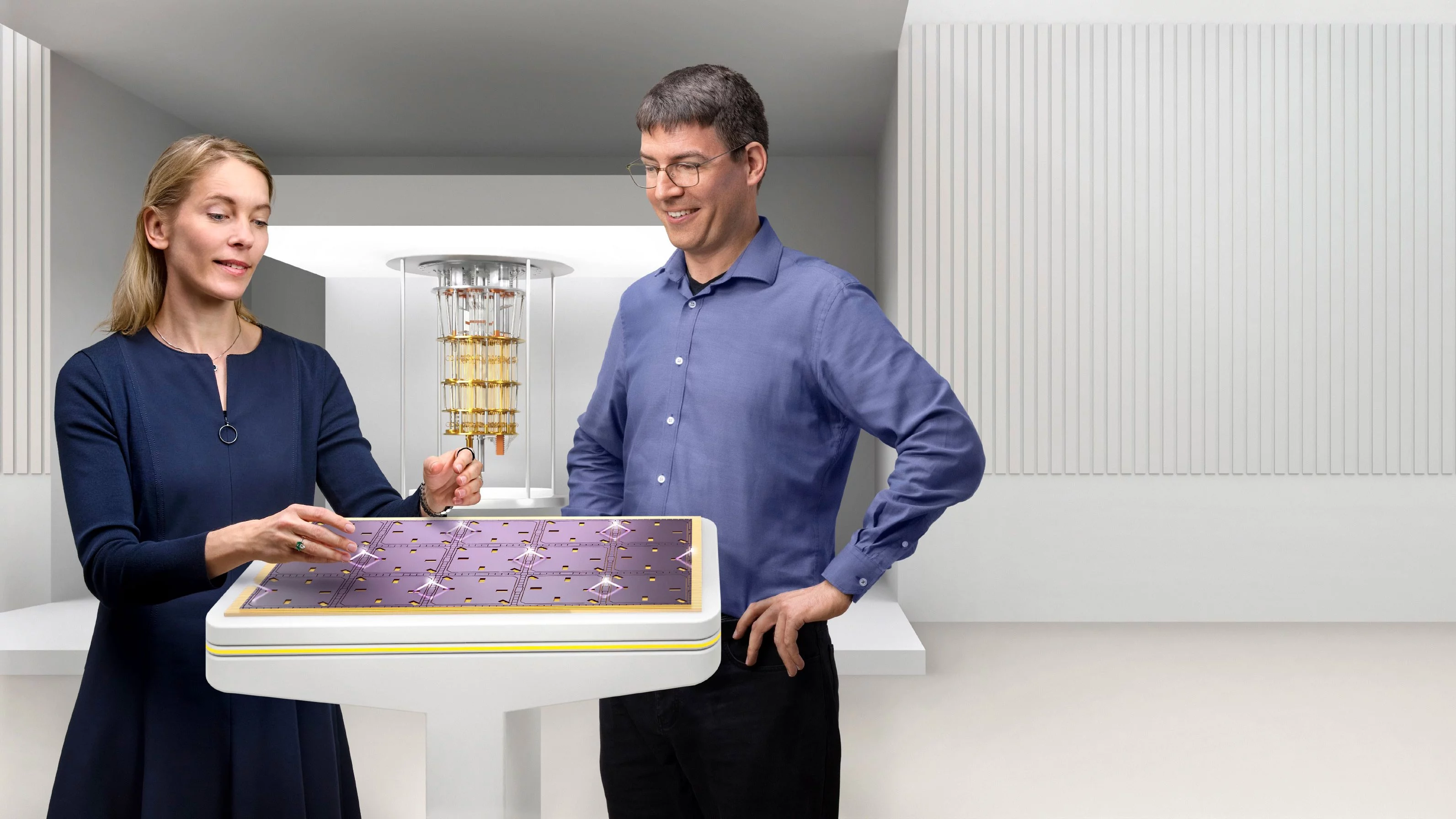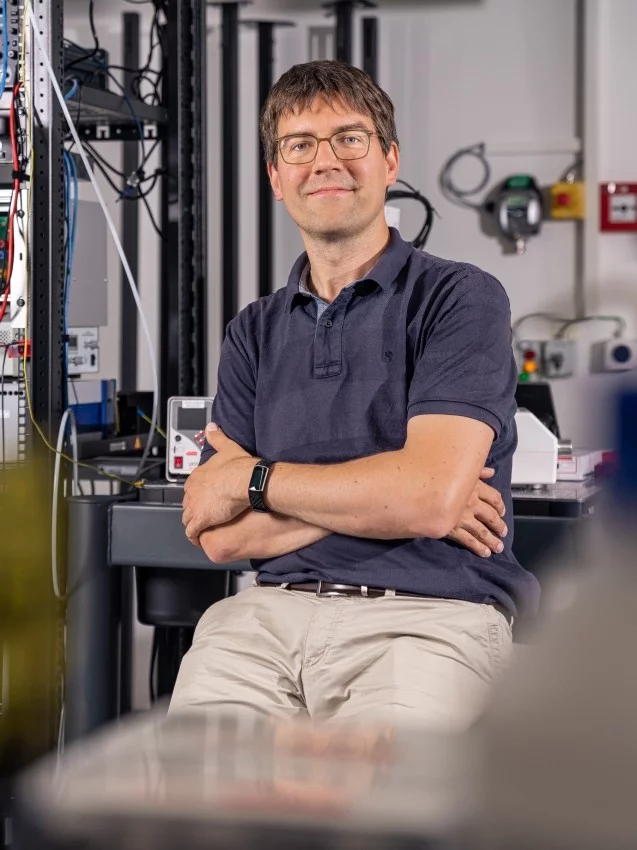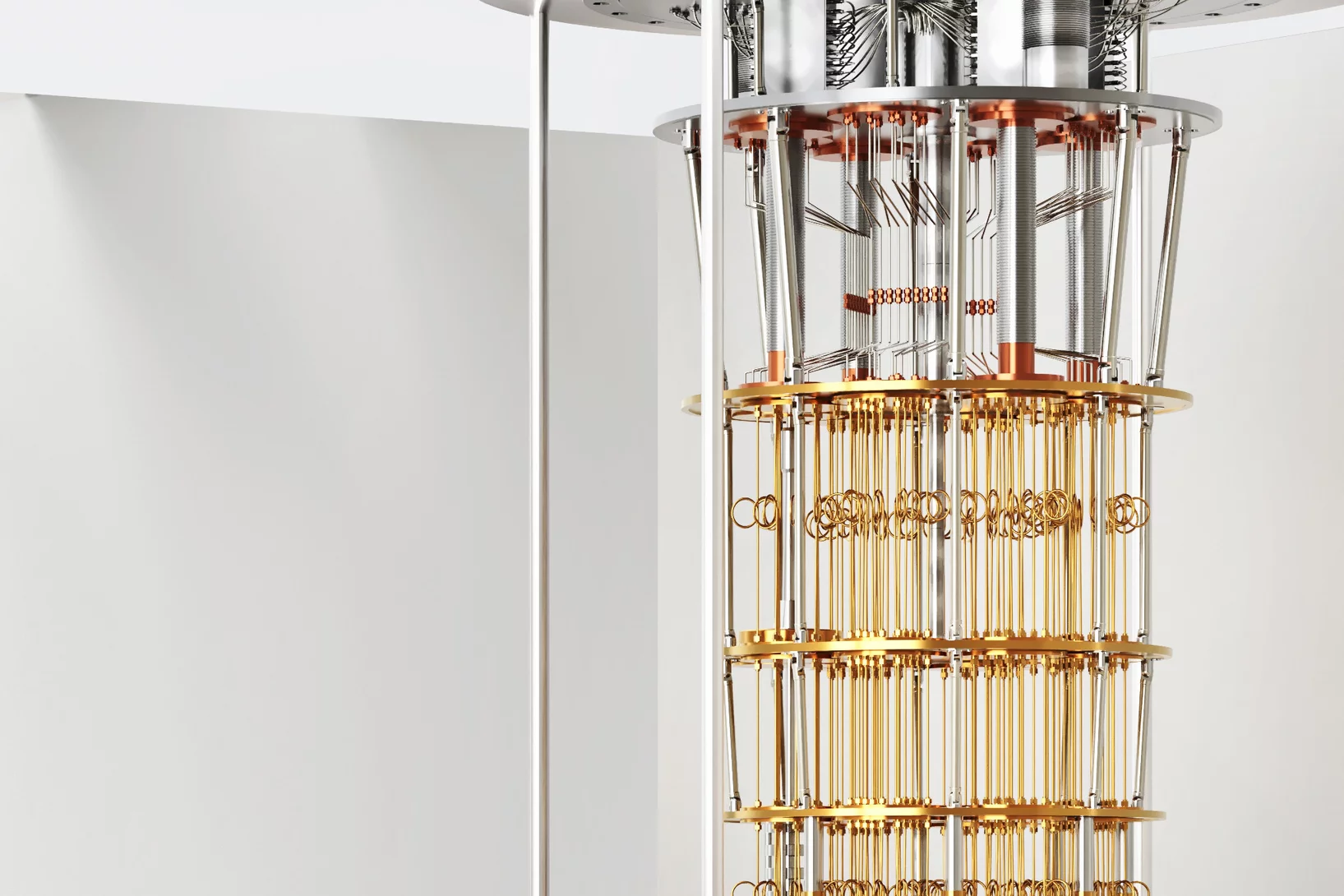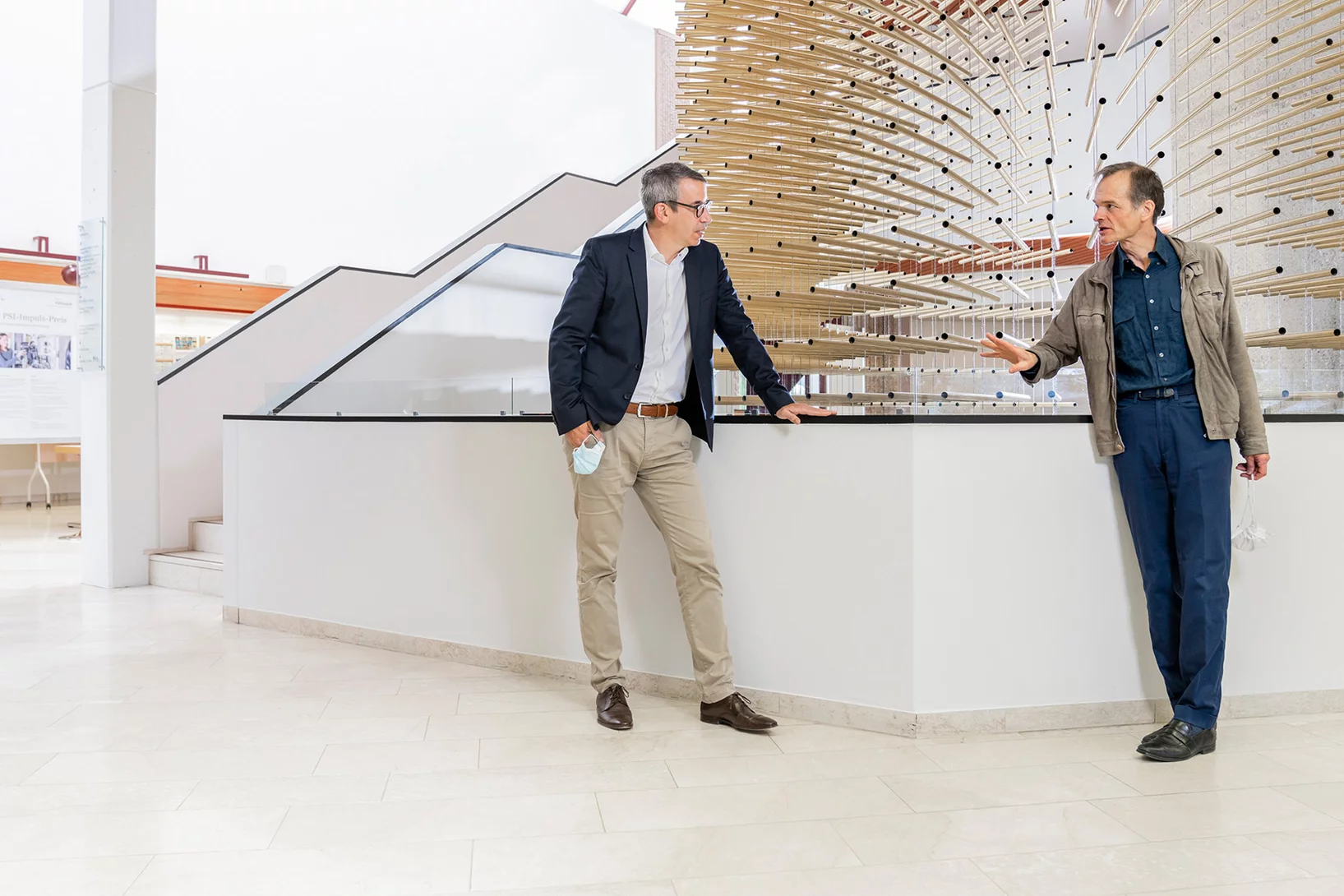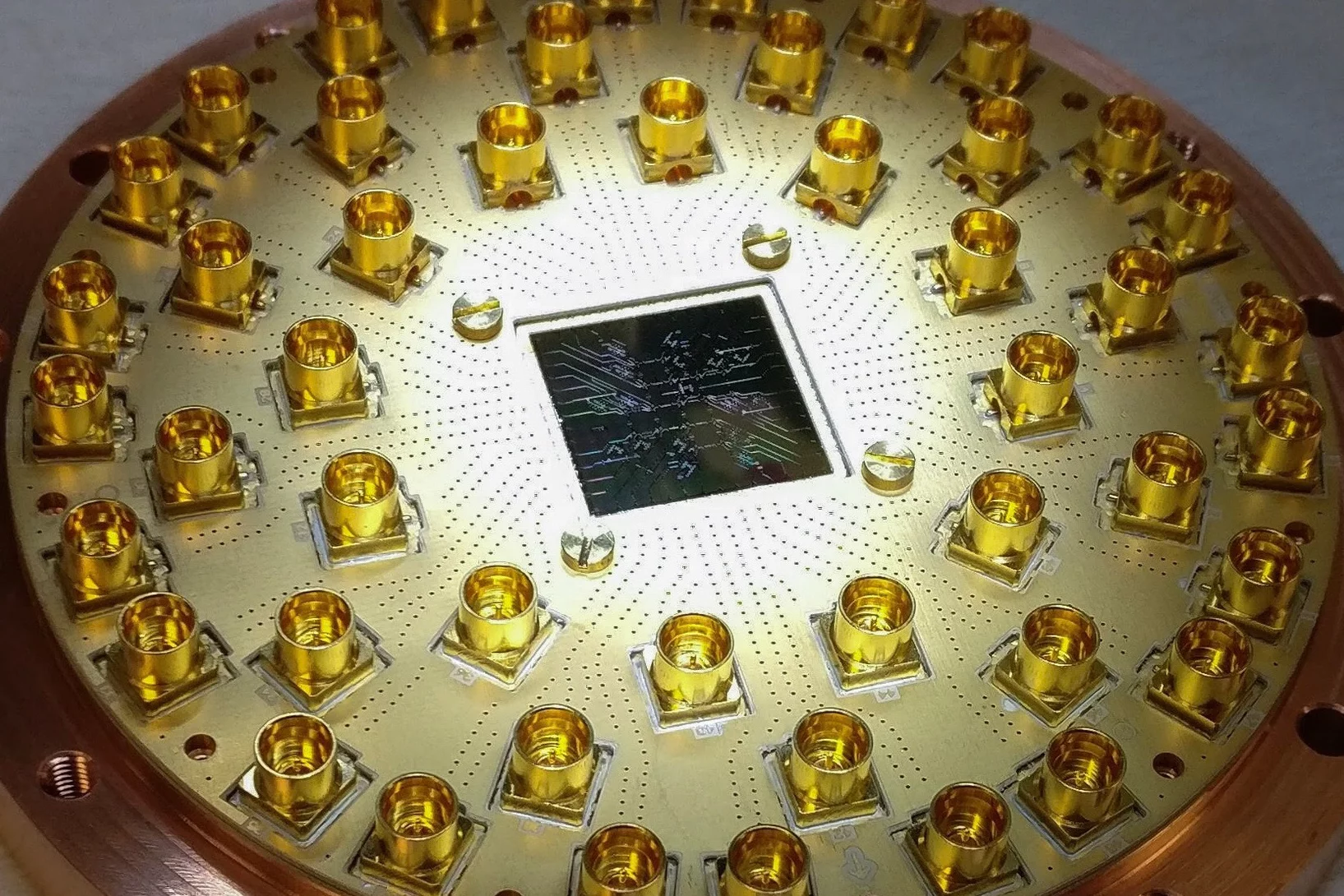Researchers at ETH Zurich and PSI are participating in two quantum computing projects that are being financed by IARPA, the US research funding agency, with up to 40 million dollars. Both projects aim to connect two error-corrected qubits with one another and thus lay the foundation for future quantum computers.
Science, industry and society have been dreaming of quantum computers for many years. These hold the promise of solving challenging computational problems that are beyond the capabilities of conventional computers. But so far, their susceptibility to errors has limited their use to a handful of extremely specific tasks.
In recent years, researchers at ETH Zurich have been working on error correction in quantum systems. In one case, they successfully linked 17 physical quantum bits (qubits) so that nine of these qubits together formed a logical qubit and the remaining eight took over the error correction. In another case, ions, i.e. charged atoms, were used for the qubits and their movement was used to stably store the quantum information. The problem: a single logical qubit does not make a quantum computer.
Two teams, two technologies, one goal
The US research funding agency IARPA has launched multiple basic research projects aimed at combining two logical qubits and transferring the quantum state of one logical qubit to the other. To this end, IARPA plans to invest a total of up to 40 million dollars over the next four years in the two projects SuperMOOSE and MODULARIS, both of which have researchers from PSI and ETH Zurich involved.
SuperMOOSE is an international project led by ETH Professor Andreas Wallraff, who heads the Superconducting Circuits Quantum Computing research group at PSI.
MODULARIS is coordinated by the University of Innsbruck. Among others, PSI researcher Cornelius Hempel, head of the research group Ion-trap Quantum Computing, and Jonathan Home, professor at ETH Zurich, are involved.
The ETH Zurich - PSI Quantum Computing Hub at the Paul Scherrer Institute plays a key role in both SuperMOOSE and MODULARIS, as this is where the two institutions pool their expertise in the field of quantum computing.
Regarding their content, SuperMOOSE and MODULARIS are pursuing different technologies. While Andreas Wallraff's team is focusing on superconducting circuits, MODULARIS is tackling the challenge on the basis of ion traps. Details of both teams’ progress will be published in scientific journals and the success of the initiative will be evaluated continuously over the four years it is scheduled to run.
“If we manage to connect two error-corrected qubits with one another, we’ll have laid the groundwork for future quantum computers that can then be used to tackle a broad range of tasks,” Wallraff says. However, this will demand several additional steps to connect at first dozen, then hundreds and finally thousands of logical qubits.
International collaboration essential
Quantum computers are among the key technologies of the 21st century. Developing them, however, is a complex, time-consuming and costly process. International cooperation within the framework of research consortia is therefore essential. “We are very pleased that ETH Zurich and PSI are involved in even two of the selected projects through their joint Quantum Computing Hub. It shows that by founding the Hub we have taken the right direction,“ says Cornelius Hempel. “Scaling up to larger systems, as is essential for logical qubits, is one of the core tasks of the Hub with its location right next to the large-scale research facilities at PSI. Supported by this funding, we can be at the forefront of quantum computing research in both projects.“
Text: Based on a media release by ETH Zurich with additions from the Paul Scherrer Institute
© PSI provides image and/or video material free of charge for media coverage of the content of the above text. Use of this material for other purposes is not permitted. This also includes the transfer of the image and video material into databases as well as sale by third parties.
Contact
Dr. Cornelius Hempel
Head of the research group for Ion-trap Quantum Computing
Laboratory for Nano and Quantum Technologies
Paul Scherrer Institute, Forschungsstrasse 111, 5232 Villigen PSI, Switzerland
+41 56 310 56 35
cornelius.hempel@psi.ch [German, English]

